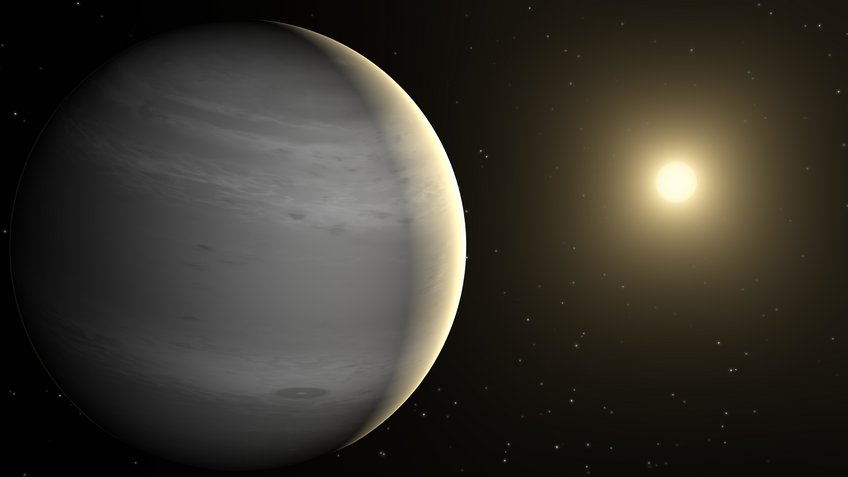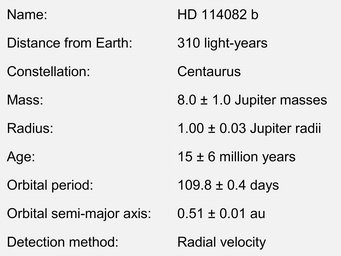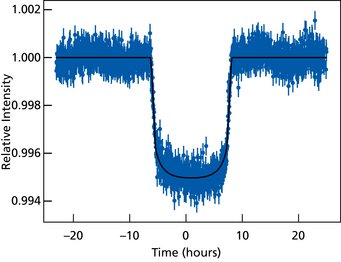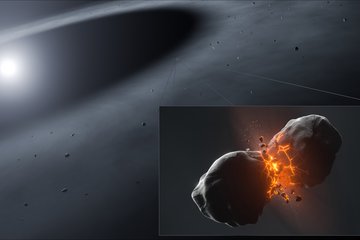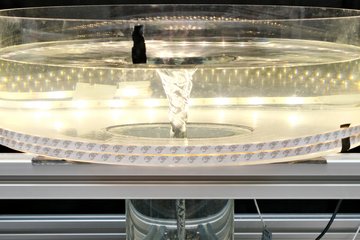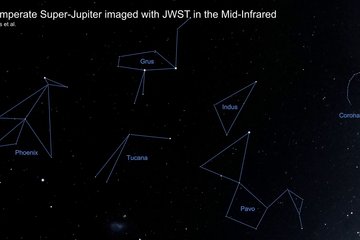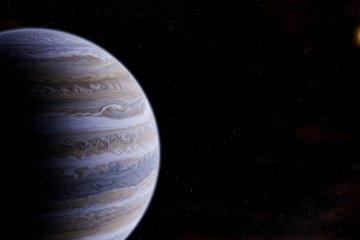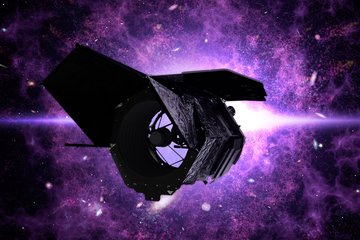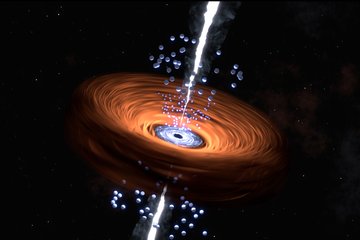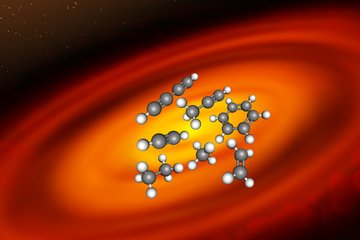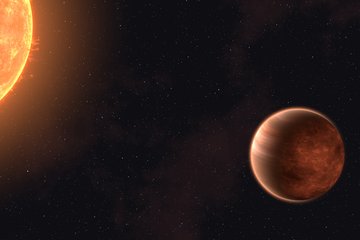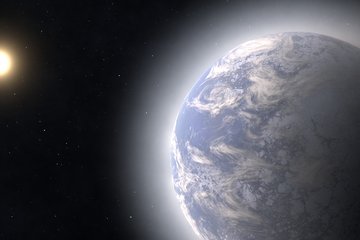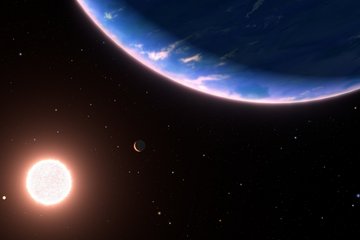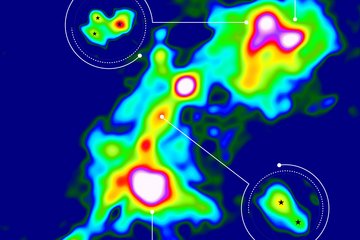A young gas giant exoplanet has astronomers puzzled
Scientists find the youngest super-Jovian exoplanet yet for which they measure both mass and size
A team of astronomers led by Olga Zakhozhay from the MPIA discovered a giant exoplanet around the Sun-like star HD 114082. With an age of only 15 million years, this super-Jupiter is the youngest exoplanet of its kind for which astronomers managed to determine its radius and mass. While its size matches Jupiter’s diameter, the mass of HD 114082 b amounts to eight times Jupiter’s value. Combining these quantities is hard to reconcile with the widely accepted models of planet formation. A possible solution to this riddle may require an update of the formation models to allow for an unusually large solid planetary core. The results appear as a Letter to the Editor in the journal Astronomy & Astrophysics.
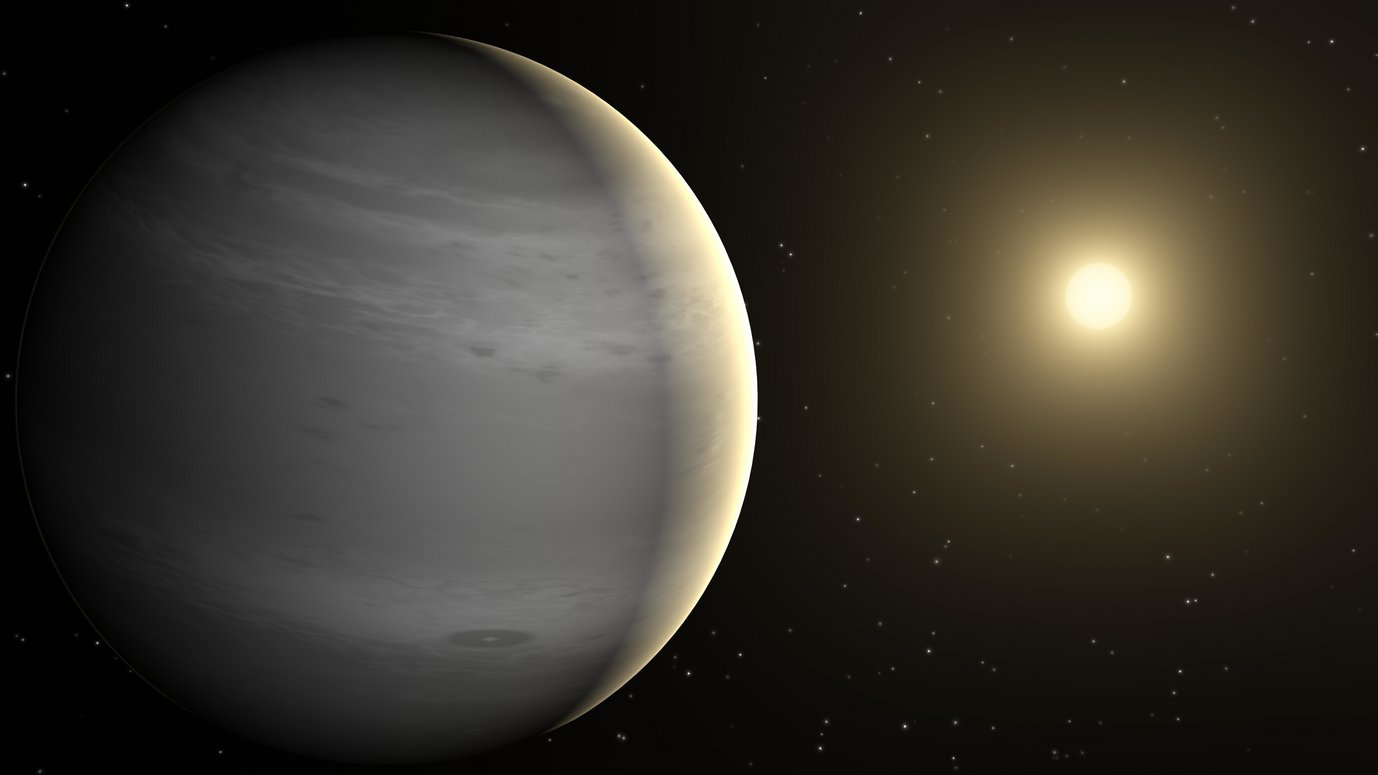
Astronomers have discovered more than 5000 exoplanets, of which about 15% are gas giants with masses of at least that of Jupiter. Now a group of astronomers led by Olga Zakhozhay (Max Planck Institute for Astronomy, Heidelberg, Germany and Main Astronomical Observatory, National Academy of Sciences of Ukraine, Kyiv, Ukraine) discovered an exoplanet named HD 114082 b with a peculiar set of properties that lets scientists scratch their heads.
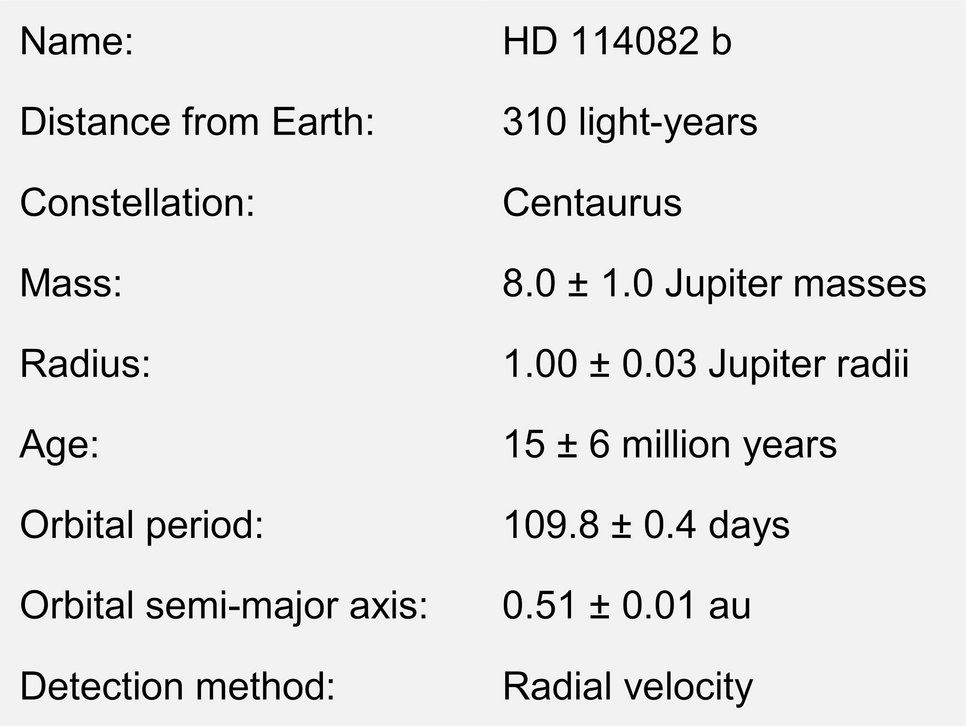
The planet is about as big as Jupiter, but its mass reaches eight Jupiter masses. “Compared to currently accepted models, HD 114082 b is about two to three times too dense for a young gas giant with only 15 million years of age,” says Olga Zakhozhay, the principal author of the study. The resulting mean density of that gas planet amounts to twice that of Earth – which is truly remarkable. After all, Earth is a rocky planet with an iron-nickel core, and not made of hydrogen and helium, the lightest elements in the Universe that make up Jupiter almost entirely.
“HD 114082 b is currently the youngest known gas giant planet with an established mass and radius,” Zakhozhay points out. As a result, it promises to teach astronomers something about the formation of gas giants in general.
Two different mechanisms of planet formation
“We think that giant planets can form in two possible ways,” Ralf Launhardt, a co-author from MPIA, says. “Both occur inside a protoplanetary disk of gas and dust distributed around a young central star.” The first process, known as “core accretion”, involves in a first stage, accumulating a solid core of rocky material. Once it attains a critical mass, its gravitational force attracts the surrounding gas, leading to the accretion of hydrogen and helium in a runaway process to form a giant planet. The second mode, named “disk instability”, features gravitationally unstable parcels of dense gas that collapse directly to grow into a giant planet without a rocky core.
Depending on the assumptions made for those two scenarios, the gas should cool down at different rates, determining the temperature of young gas giant planets. Hence, the new planets may experience a “cold start” or a “hot start”, leading to observable differences that can potentially distinguish between those models, especially at a young age.
The preferred models don’t fit
Currently, astronomers prefer a core accretion scenario with a hot start for giant planets sich as HD 114082 b. Since hot gas encompasses a larger volume than cold gas, one should measure notable differences in the sizes of the observed planets. This contrast in size is more pronounced for young planets. However, it becomes less pronounced during the initial hundreds of millions of years of cooling after formation.
At face value, HD 114082 b defies the astronomers’ expectations. Its combination of mass and size is incompatible with the hot start picture. Instead, it seems to match the cold-start scenario better. Interestingly, other, slightly older candidates cited in other studies show the same behaviour. “It’s much too early to abandon the notion of a hot start,” Ralf Launhardt explains. “All we can say is that we still don’t understand the formation of giant planets very well.” It is clear that compared to the current models, HD 114082 b is too small for its mass. Either it has an unusually large solid core, or the models are incorrect and underestimate the rate by which those gas giants can cool – or both.
The benefit of long-term projects
HD 114082 b’s discovery results from an extensive observational program named RVSPY (Radial Velocity Survey for Planets around Young stars). Currently, it consists of 775 hours of observing time with the MPIA-operated ESO/MPG 2.2-metre telescope at the European Southern Observatory’s (ESO) La Silla site in Chile, spread out across 4.5 years. RVSPY is a good example of high-yield astronomical research carried out at telescopes with sustained access over a long period. Such studies would hardly be possible with the latest telescopes, as the observation time per project is severely limited due to the high demand.
RVSPY aims to uncover the population of (hot, warm, and cold) giant planets around young stars. To do this, the astronomers obtain time series of spectra of 111 young stars, meaning splitting the starlight into its fundamental colour components, similar to what we see in a rainbow. Tiny periodic shifts in the stellar spectra may indicate a tumbling movement of the observed star caused by the gravitational pull of an orbiting planet. In principle, the stars’ activity, like pulsations or flares, may compromise the measurements, particularly in young stars like HD 114082. However, the RVSPY data quality is good enough to detect the signal from the wobbling star beyond any doubt. The team also included older archival data from other telescopes to extend the coverage into the past.
A transit event completes the analysis
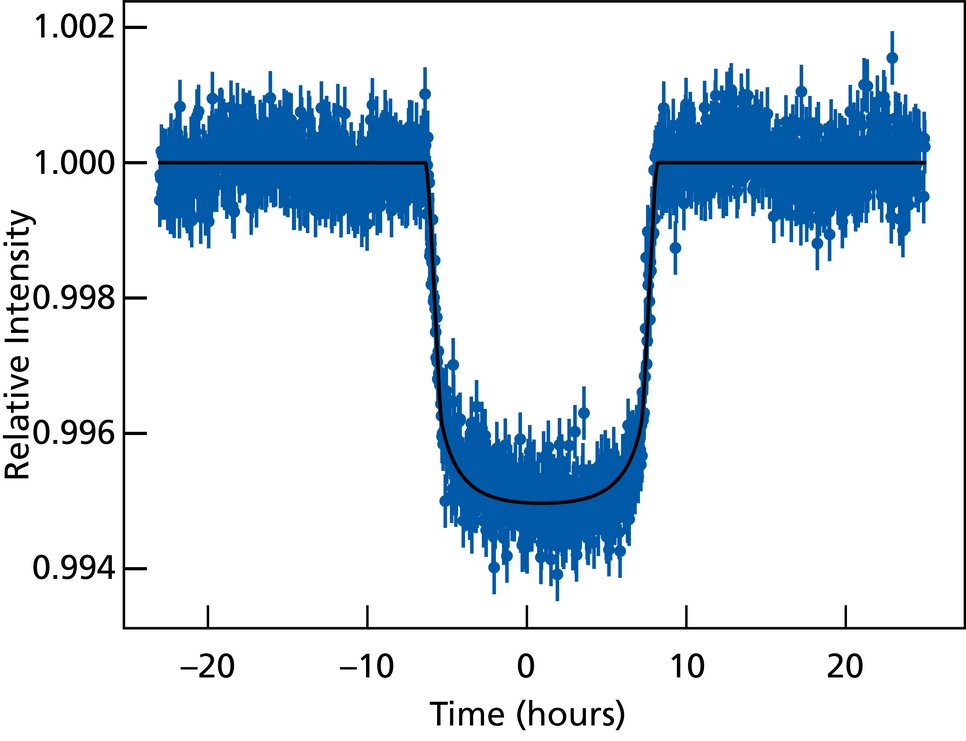
While astronomers apply this so-called radial velocity (RV) method to infer a planet’s mass and duration of one revolution around its central star, the orbital period, they must rely on a different technique to determine its size. Suppose that the planetary orbit is oriented in such a way to us that, by chance, it crosses the central star. Astronomers call such an event a “transit”. When that happens, the periodic tiny reduction in the received light during transits can be directly translated into the planet’s radius and helps refine its orbital period.
“We already suspected a nearly edge-on configuration of the planetary orbit from a ring of dust around HD 114082 discovered several years ago,” says Olga Zakhozhay. “Still, we felt lucky to find an observation in the TESS data with a beautiful transit light curve that improved our analysis.” TESS (Transiting Exoplanet Survey Satellite) is a NASA space probe searching for exoplanets around stars relatively close to Earth.
Combining these measurements, Zakhozhay and her colleagues found HD 114082 b to orbit its Sun-like parent star within 110 days at a distance of approximately 0.5 astronomical units. One astronomical unit is the mean distance between the Sun and Earth. It thus resembles the orbit of Mercury around our sun.
In need of better models
HD 114082 b is one of only three young giant planets with ages up to 30 million years with known masses and sizes. And all of them are probably inconsistent with the most commonly adopted hot-start models. Although the astronomers are looking at low-number statistics with three out of three, it seems unlikely those planets are all outliers. “While more such planets are needed to confirm this trend, we believe that theorists should begin re-evaluating their calculations,” Zakhozhay points out. “It’s exciting how our observational results feed back into planet formation theory. They help improve our knowledge about how these giant planets grow and tell us where the gaps of our understanding lie.”
Background information
The MPIA researchers involved in this study are Olga V. Zakhozhay (also Main Astronomical Observatory, National Academy of Sciences of Ukraine, Kyiv, Ukraine), Ralf Launhardt, Trifon Trifonov, Martin Kürster, Thomas Henning, and Gabriel-Dominique Marleau (also University Duisburg-Essen, Germany; Tübingen University, Germany; Bern University, Switzerland).
MN
